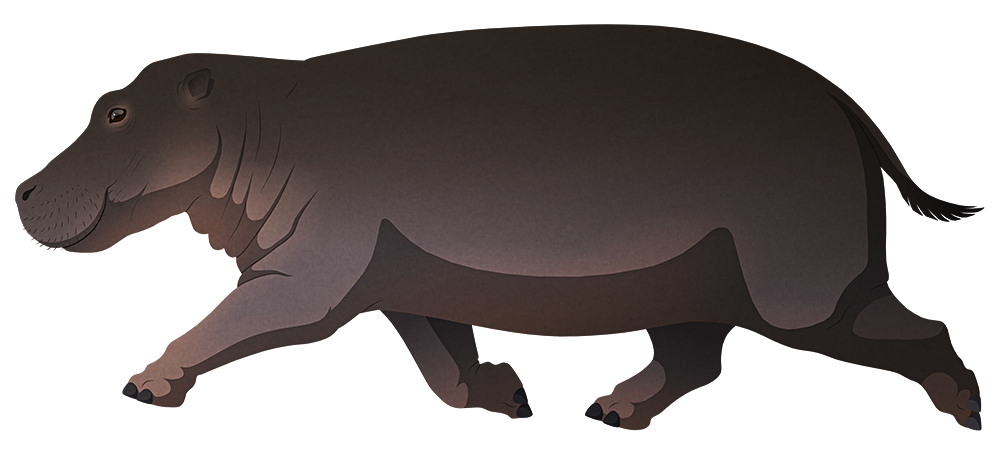Cyprus is one of the most isolated islands in the Mediterranean, having had no close connections to the mainland for the last 5.3 million years and being uplifted to close to its modern size during the Pleistocene. As a result it had very few land mammals, all of which arrived by swimming or rafting: rodents, shrews, a genet, dwarf elephants, and a dwarf hippopotamus.
Hippopotamus minor (sometimes called Phanourios minor) seems to have been descended from the common hippo, which probably swam across to Cyprus from the Levant region sometime in the mid-to-late Pleistocene, around 400,000 years ago. Isolated with no predators and limited space it rapidly became dwarfed compared to its ancestors, reaching at most 75cm tall at the shoulder (2’6″) — making it the tiniest known island hippo, and slightly smaller than the modern pygmy hippo.
It became much more terrestrial, with more digitgrade feet adapted for walking and climbing over rugged rocky terrain. Its teeth suggest a diet of pig-like browsing on forest vegetation — and much like pigs (and other hippos) they may have been opportunistic omnivores occasionally also eating small animals and carrion.
Despite being so small for a hippo, it was still one of the largest animals living on Cyprus, weighing about the same as the dwarf elephants it lived alongside. It also seems to have been the most common of the mammals on the island, with remains of thousands of individuals having been found.

While larger dwarf hippos are known from several other Mediterranean islands, the Cypriot species is the only one that seems to have survived into the early Holocene.
The earliest known evidence of humans in Cyprus comes from a rock shelter on the southern coast, dating to about 12,000 years ago, consisting of stone tools and a massive concentration of burned animal bones — with over 200,000 of them coming just from Hippopotamus minor. It’s possible that in addition to being so abundant on the island, the dwarf hippos’ evolution in the absence of predators meant they had no fear of humans and were much less aggressive than their larger relatives, making them particularly easy to hunt and kill.
…Or they were just especially tasty.
Later deposits from about 2000 years later show no sign of the hippos at all, with their role in the Cypriot ecosystem completely replaced by introduced species like deer, sheep, and goats.



